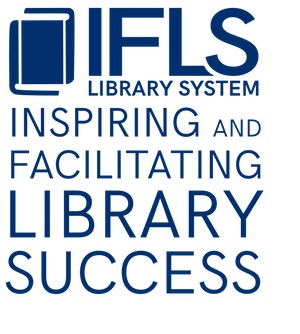Labeling & Rating Systems
On This Page
Frequently asked questions
What is the current situation?
What about directional labels?
How can I help patrons find materials?
Why shouldn’t we label materials with certain content?
Additional Resources
Can’t find what you’re looking for here? Use this search box to search the IFLS Article Index.
Additional Support from IFLS
Click on the green HelpDesk button and we’ll make sure the right IFLS staff gets that message right away. Can’t find the green button? Use this email: helpdesk@ifls.lib.wi.us.
What is the current situation nationally and locally with labeling?
Librarians use professional judgement and expertise to select, catalog and classify, place and promote materials to make sure that people can find what they want and need. Sometimes a label can help people more easily find what they are looking for, and sometimes labels can either intentionally or unintentionally restrict use.
Right now, there is an increase in organized scrutiny of library collections. These efforts are aimed at limiting access to materials, or in other words, censorship. Rating systems like BookLooks, created by Moms for Liberty members, are being promoted by groups and individuals as a way to restrict access. Some groups or individuals demand that libraries label materials, but this act can restrict access to materials, one of the ways materials are censored.
According to the ALA Freedom to Read Statement: “It is not in the public interest to force a reader to accept the prejudgment of a label characterizing any expression or its author as subversive or dangerous. …labeling presupposes the existence of individuals or groups with wisdom to determine by authority what is good or bad for others. It presupposes that individuals must be directed in making up their minds about the ideas they examine. But Americans do not need others to do their thinking for them.”
In short: When considering whether to add a label to an item in the collection, librarians should carefully weigh the way-finding benefits with possible negative consequences of applying the label.
How can labels or rating systems restrict use?
- Rating systems are privately developed using subjective and changing criteria and predispose people’s opinions about the materials when labels with rating system information are placed on library materials.
- This includes movie, game, and music ratings
- It also includes tools like BookLooks, created by members of Moms for Liberty and CommonSense Media’s ratings, to name a few.
- Rating systems can be a slippery slope to specifically restricting access to materials for certain ages and groups of people.
- Labels can be prejudicial or be viewed as prejudicial or as a warning, thus restricting access to materials by
- Negatively predisposing people’s opinions about materials
- Creating concerns that being seen with labeled materials will lead to judgement or harassment from others
What about directional labels that are designed to help people find what they are looking for?
It can sometimes be hard to tell whether a directional label could also be a prejudicial label, and there is some room for difference of opinion here.
- Many libraries use genre labels for fiction collections or in classifying picture book collections by broad subject.
- Most of these labels are considered viewpoint-neutral labels.
- Some labels are not really genre labels. “Diverse Books” or “LGBTQ+” are examples of labels that could be seen as a judgement or notice on the content.
- Some libraries, at the request of parents or school partners, have labeled books with Lexile labels or Accelerated Reader labels.
- Some point out that these labels restrict students from choosing books that are not within their assigned levels, and can also create tension for students reading below grade level.
- For others, it is worth the potential for judgment because this is seen as an educational tool that was specifically requested by partners, parents, and children to ensure that they can find the books that they need and want.
How can I help my patrons find materials that will be a good fit for them without labels?
- Reviews on the catalog–be sure to include as wide a range of reviews as possible
- One-on-one reader/viewer advisory services
- You can let library patrons know that there are independent rating services and show them how to access them as needed
Why shouldn’t we label materials with information about whether materials have violent or sexual content or content about sexuality and gender?
- This may restrict access (see above).
- There are people with varying attitudes, opinions, and experiences in every community. Therefore, making a judgment about what constitutes violence or sexual content for everyone is impossible. Is saying mean things violence? Is holding hands or kissing sexual content?
Additional Resources
Recognizing Both Active and Passive Censorship Practices by Dr. Emily Knox
Labeling and Rating Systems Q and A from the American Library Association
When Is a Book Ban Not a Book Ban: The Rebrand of a National Pastime by Kelly Jensen
